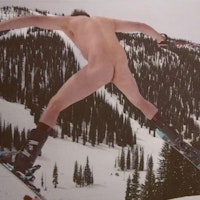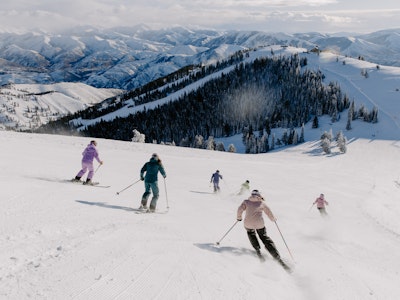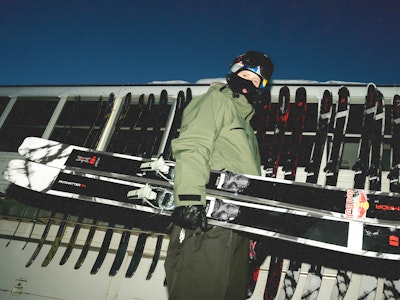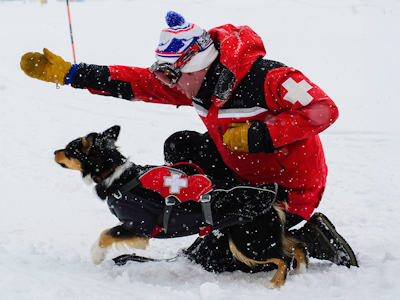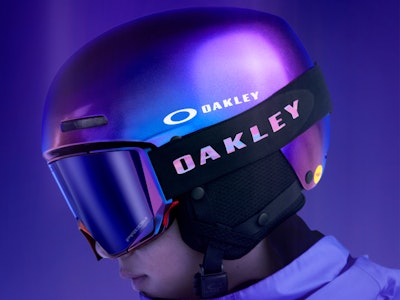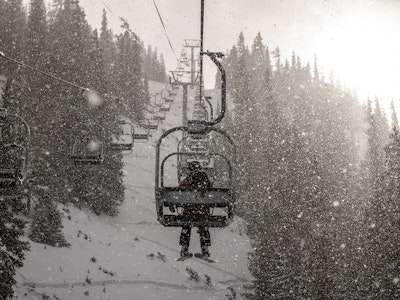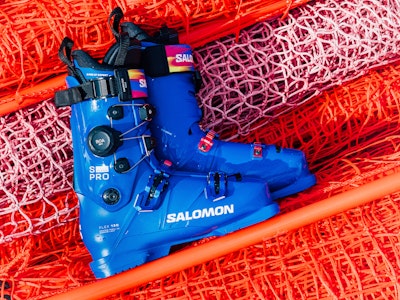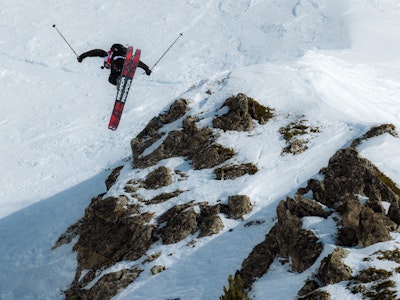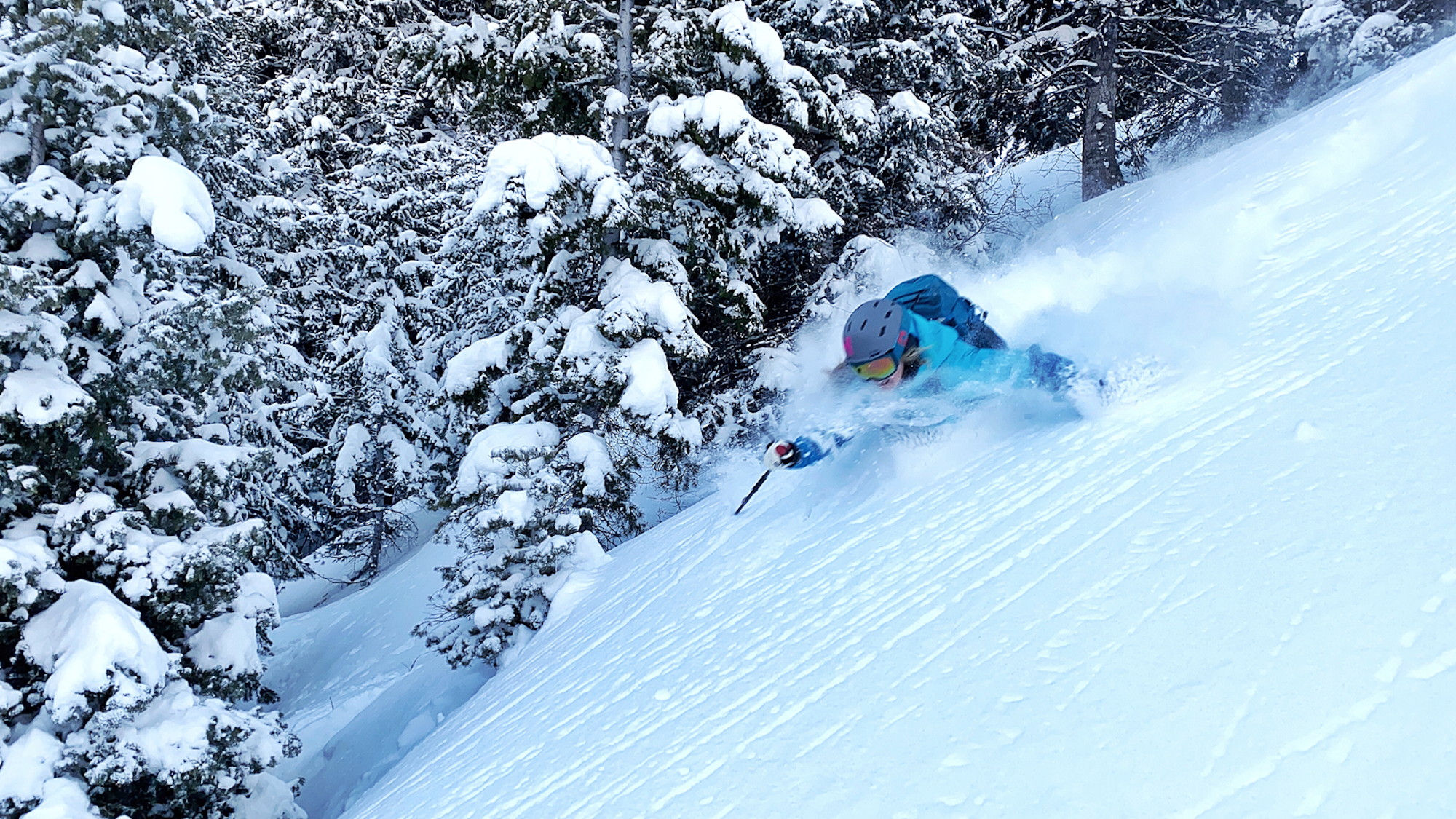After ten years as an elite world cup racer and ten subsequent years as a professional big-mountain skier, Kaylin Richardson knows a thing or two about carving turns and slashing pow lines—and just as much about the strength and fitness needed to do it all. After two decades of training for these unique disciplines, Richardson has a wealth of knowledge that few others around the globe can claim.
Growing up outside Minneapolis, Minnesota, and learning to ski with Team Gilboa at Hyland Hills, Richardson cut her teeth on a ski hill so small that it transitions to a driving range for golfers in the summer. She recounts, “Decent golfers can easily hit balls over it. It’s not very big but it was great to get a lot of laps in.” But that didn’t stop her from training, skiing and reaching the top of her game.
Despite small beginnings, Richardson says the work ethic established during her youth as a ski racer drove much of her success, including the Olympic team in both 2006 and 2010. Richardson retired from professional racing in 2010 and moved to Utah, to focus on freeskiing and backcountry touring. After winning her first freeski competition in 2012, she accrued a few sponsors and was invited to her first Warren Miller film. She recently wrapped her eighth Warren Miller shoot and is looking forward to the upcoming winter. We sat down with Richardson, former FREESKIER cover girl, to chat about her preseason training plan.
What do you remember about training as a kid?
I was really fortunate to start young and with a great team. Team Gilboa based in Hyland Hills built a lot of the foundation I still think about today. I remember summer ski camps at Mt Hood and waking up at 5AM to get a workout in. The team really emphasized fitness, but in a fun way. It was all about putting the time in. We celebrated the work and, as I progressed, a lot of my coaches noticed it. Often I wasn’t the fastest racer, but I think there was always a lot of promise in my work ethic. I was always willing to get another set in the weight room or another lap on the hill.
How did your training evolve when you made the national team?
I learned a lot from the coaches on the U.S. Ski Team about how to train harder but, more importantly, how to train smarter. It has been over ten years since I trained with the national team, so I am sure it has changed and evolved, but when I was there from 1999- 2010, we talked a lot about rest and mental training, not just the physical side of skiing.
The US Ski Team does two rounds of intense testing every year, mostly focused on strength and power, with much less focus on endurance—because ski racing is such a fast twitch sport. The U.S. Ski Team aimed to have me as fit as I could be because that translates, in part, to performance but the longest races were only a few minutes, so cardiovascular fitness was not nearly as crucial in racing than it is in the backcountry.
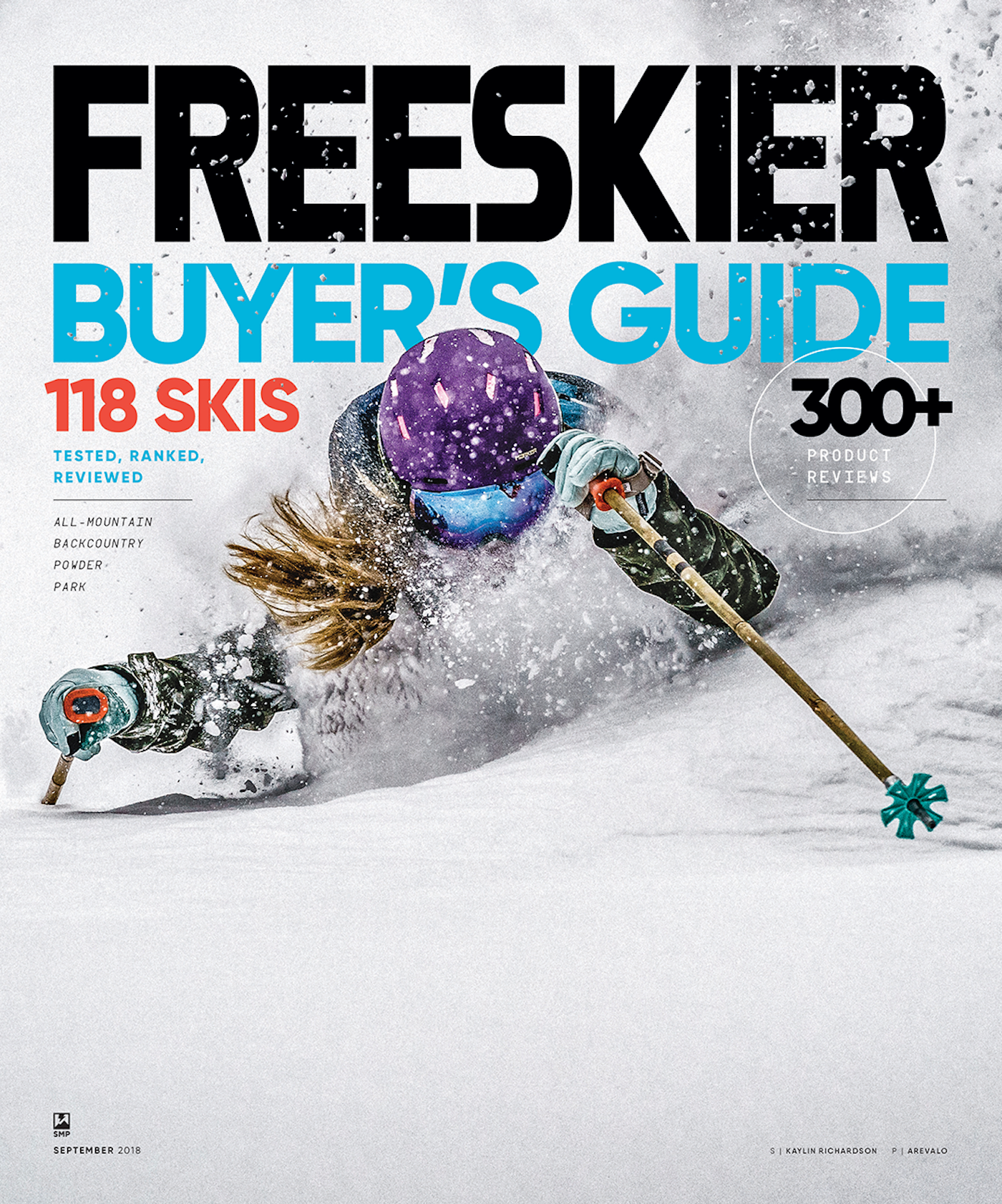
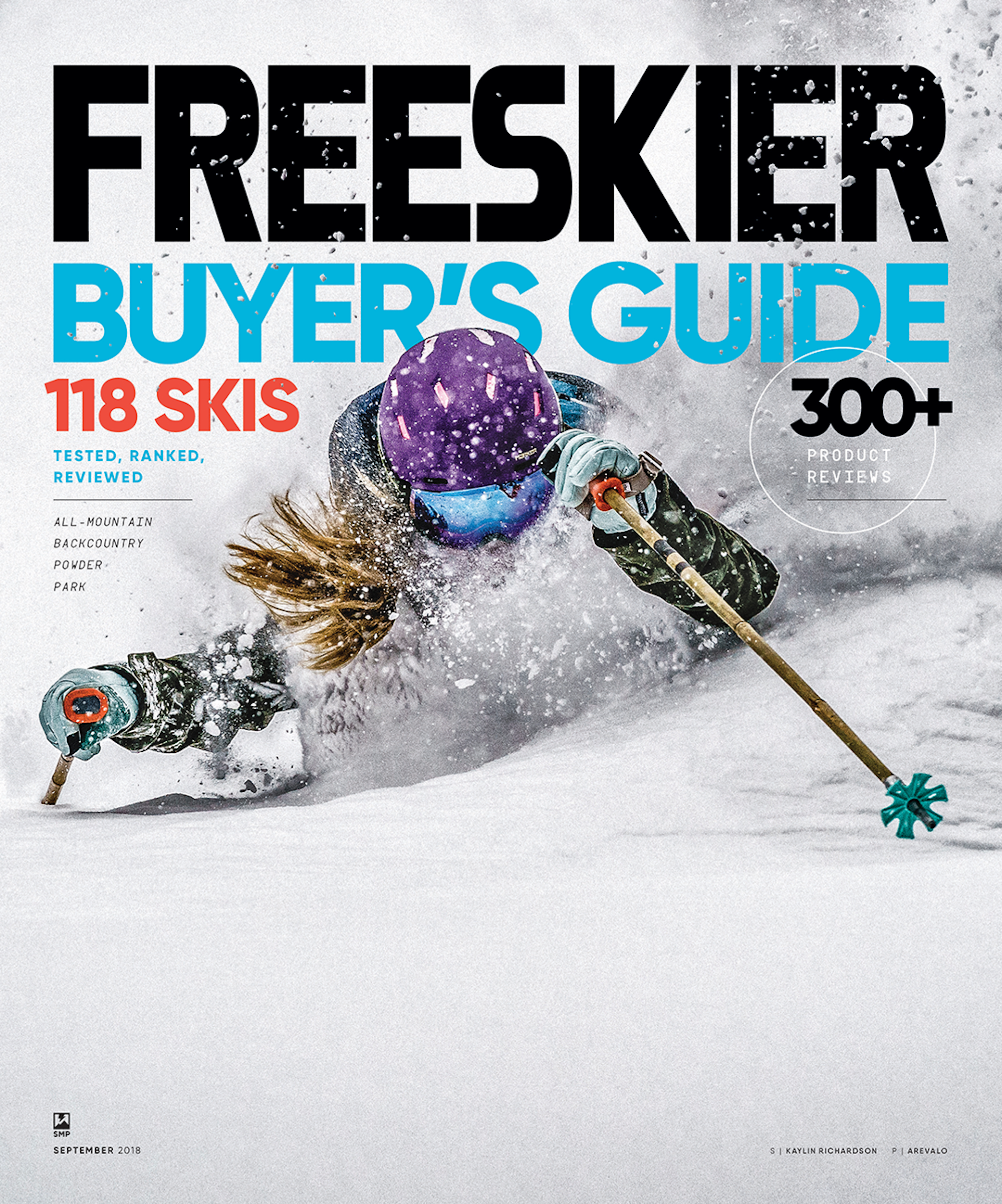
What is pre-season training like for you these days?
I still do weights, but not nearly as much as I did when I raced. If I spend more than an hour to an hour-fifteen in the gym, I grow kind of sour, so I just put on a playlist and get to it and get out. I spend the rest of my training time outside. I created a program that balances strength and stamina, with the goal of preventing injuries and having the strength to get up the hill and still have the legs to ski safely down it. I’m essentially training for two things now: the up and the down. Practically speaking, this means three strength workouts each week, three cardio workouts, and a couple stretching sessions.
When do you start ski-specific training?
I’d advise people to just generally have a healthy lifestyle and work out year-round, but for ski-specific activities I typically start when the air gets crisp. Something like the first day of school in September. For those who plan to ski the first snow in early November, maybe start a little earlier, but for most people having a three-month preseason before December is great. It’s important to ease into it, slowly building up the load on your body. I’m a big believer in pre-hab, especially for long tours in the backcountry.
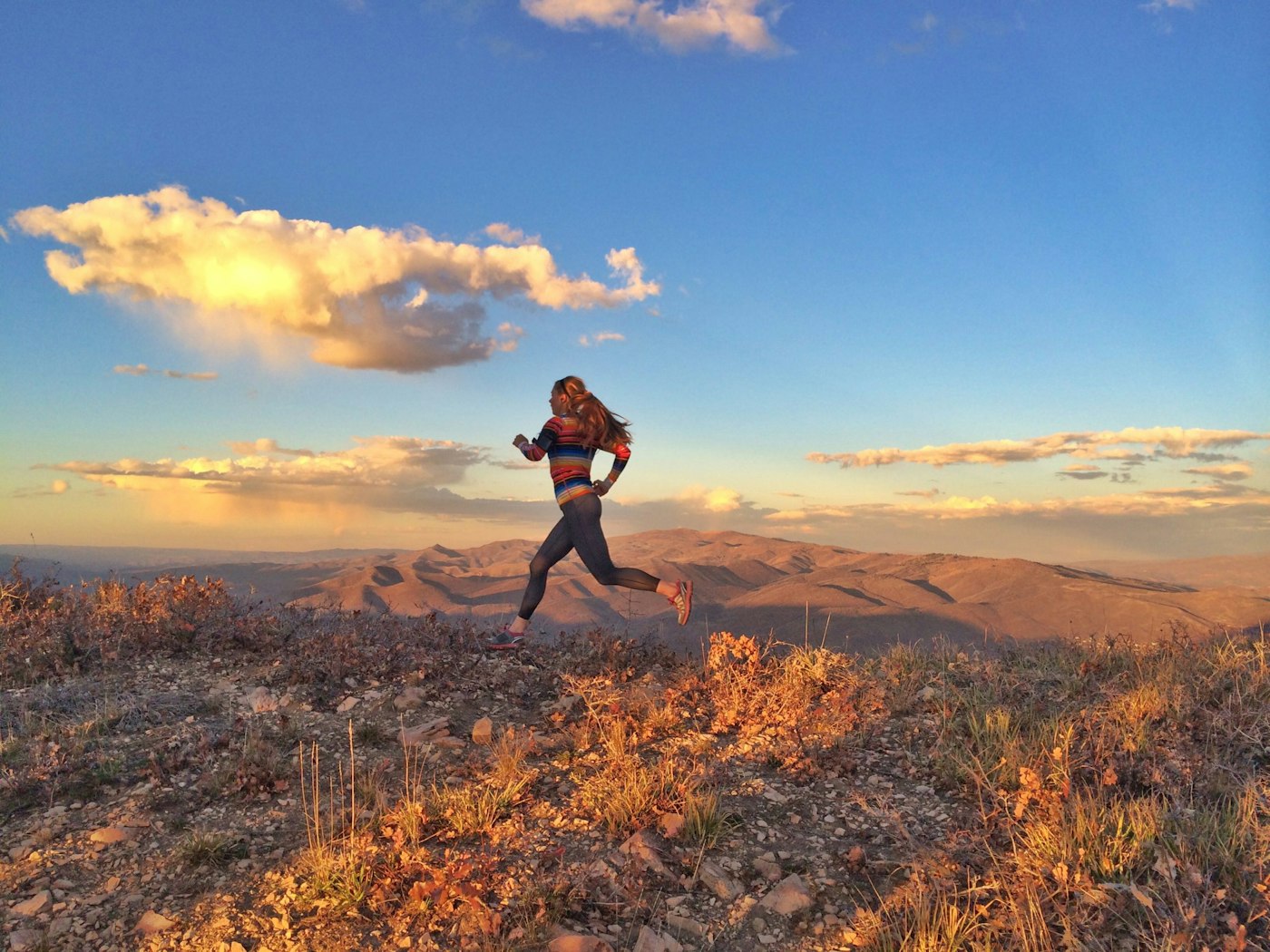
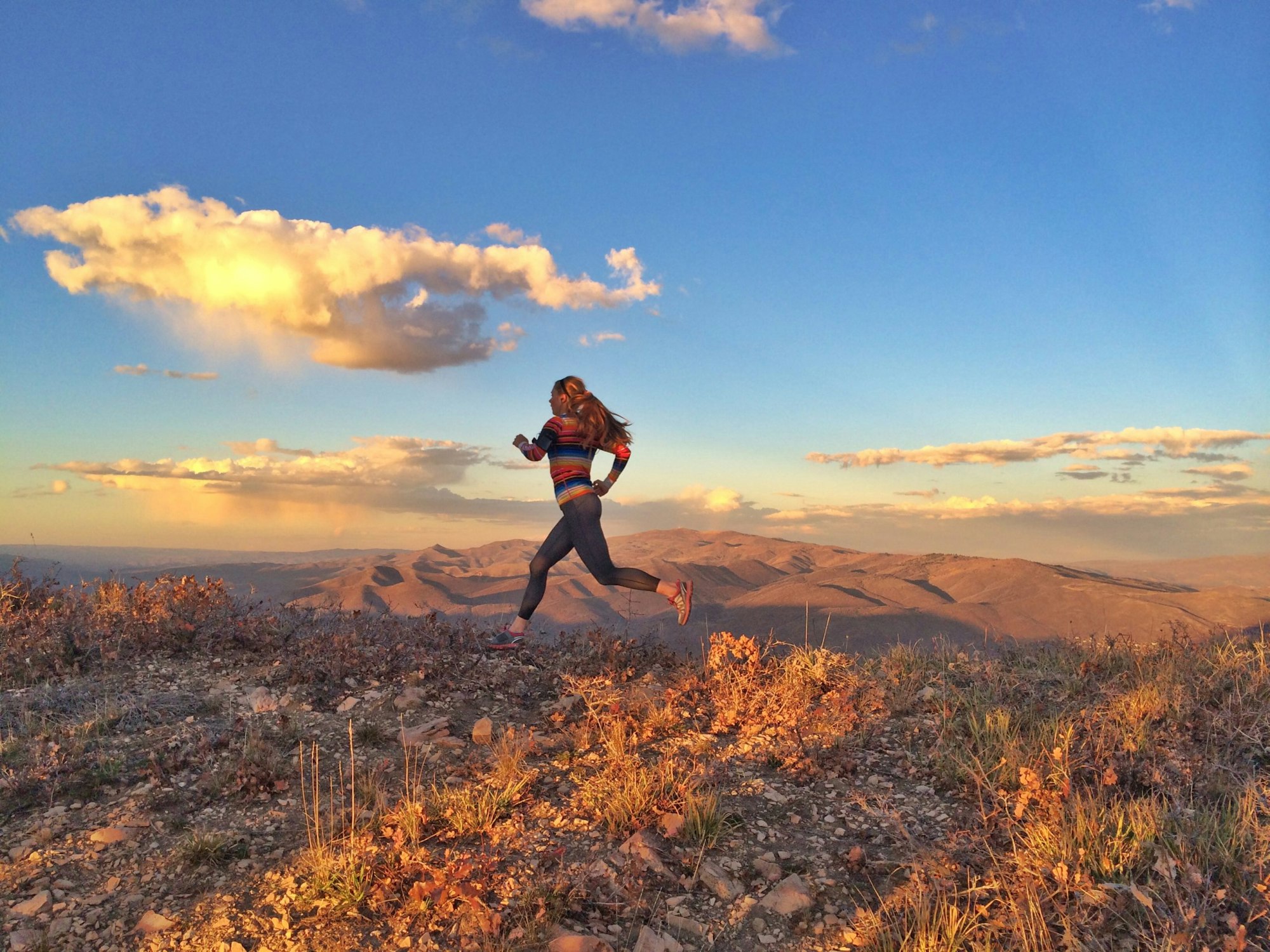
What’s your training mindset like?
It all starts with what goals I have for the year. What types of skiing am I going to focus on? Do I have some big trips with long approaches? For new backcountry skiers, I’d advise to start smaller and more realistic, and focus mainly on endurance. A good goal for me, and for anyone, is how to be more efficient. I’m always trying to move faster with a lower heart rate, to conserve energy for the downhill.
When you’re weight training, what exercises do you focus on?
Countless trainers I’ve worked with have their special sauce that involves a variety of complicated movements to build strength, but I’m a big believer in simplification. I primarily work out in the position I ski in. I use a lot of dumbbells and free weights because they strengthen all the smaller stabilizer muscles required for skiing. These are really important muscles that control a lot of your balance and help while shifting weight. You can quickly get in compromising positions when skiing out of bounds so it’s great to have these strong stabilizing connector muscles to get you out of trouble when you become imbalanced.
Honestly, you can do almost everything you need to with dumbbells, a bench and a box—a squat rack is a bonus. Lots of variations of lunges, step ups, single leg squats, deadlifts, hamstring curls, to name a few. Any time you feel it’s too easy just add a little weight or add an unstable surface. This forces you to use smaller, stabilizing muscles. I also add in some bodyweight work for my back and core and yoga for flexibility.
What’s one thing a lot of people forget or don’t know?
I’m always thinking about activating my glutes. To do this, stand on a box and lower one leg slowly, using the glute of your standing leg to regulate the motion, then gently touch/hover your heel on the ground, never relaxing, then powerfully extend your standing leg back up. This forces the glutes to fire the entire time. Slow down when you’re loading the muscle and explode out of it. That’s the key to skiing strength. Also, super sets, when you follow one exercise immediately by another, often an explosive movement—like a set of bodyweight jumps—are a great way to build strength and endurance.
Other than the glutes, what are the important muscles to build up?
I put a lot of emphasis on my back and VMO (vastus medialis oblique), a part of your quad that connects to your knee and helps stabilize and protect it. Many of the biggest and most common ski injuries are related to your knees, so this is great injury prevention. I do a lot of bodyweight work for my back, which also activates the glute creating a strong, stable posterior chain.
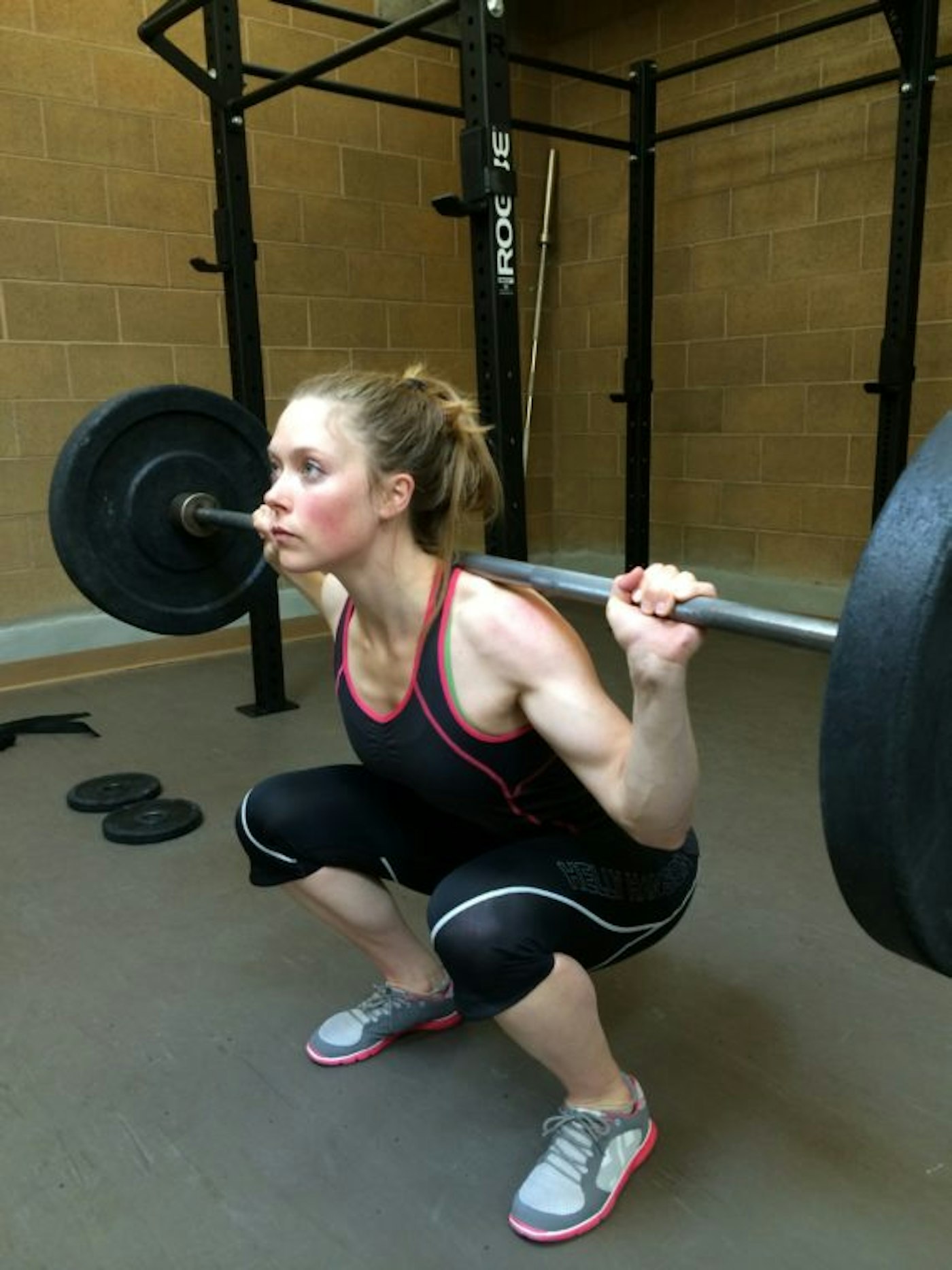
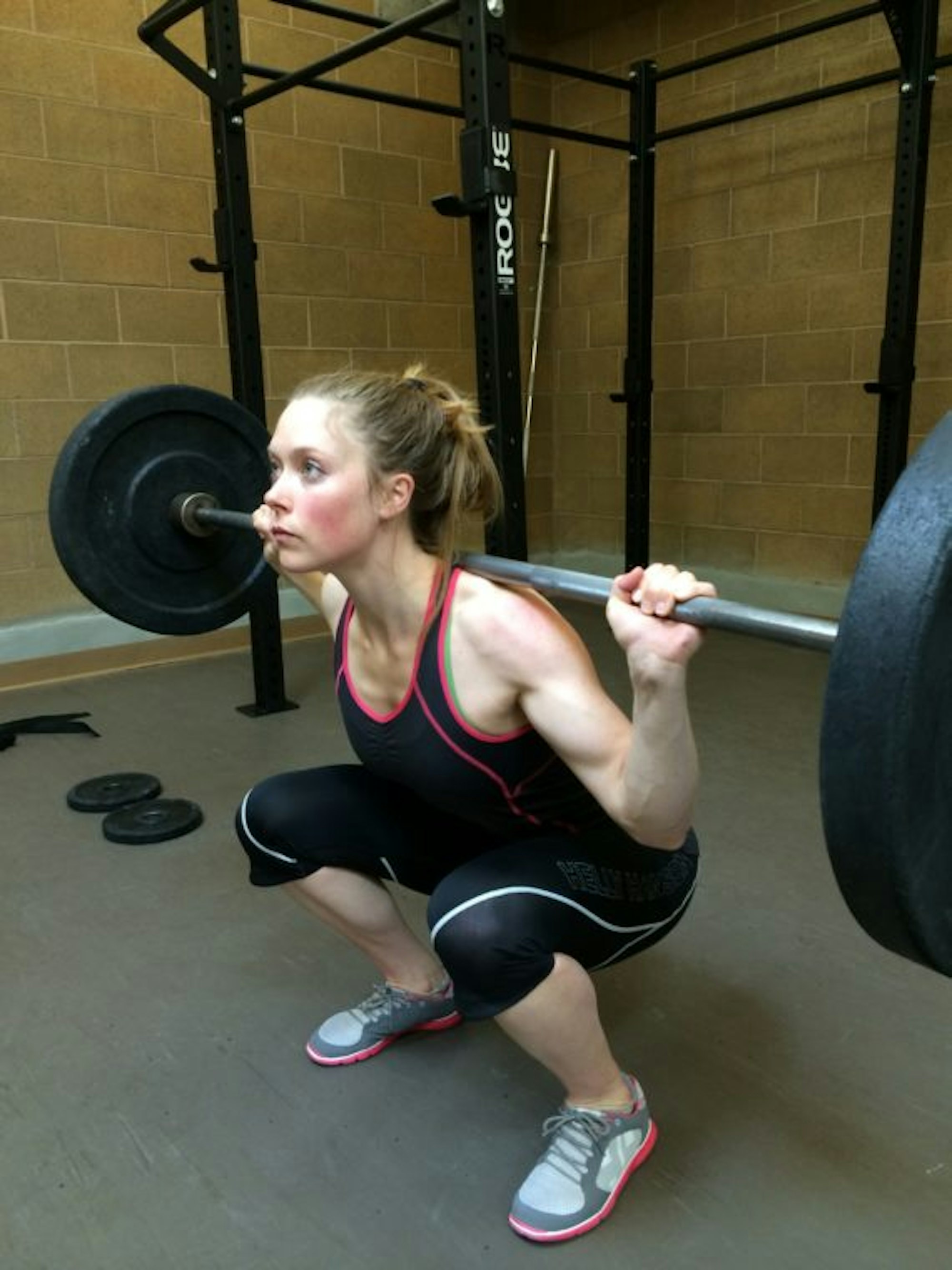
What do you do for fitness training?
I rely on a heart rate monitor to track and measure my stamina, and would recommend it to anyone. A heart rate monitor is a helpful recovery tool since it can suggest you’re overtraining when you have an elevated heart rate. They’ll help you set a baseline threshold and help you set goals to gradually increase your cardiovascular capacity. I use this for running, biking and power hiking. Every week, I try to do three cardio works, one that is steady state and two with mixed intensity. For all of these I try to get creative and make them enjoyable, so that I want to do them more often. I think many people should focus on fun over a strict regimen, so that they work out more.
What gear do you rely on most when you’re preseason training?
I’m a big fan of adjustable dumbbells, so you can move through exercises quickly. A heart rate monitor, of course, and I ride my mountain bike a lot, even though it’s at least 10-years-old. The biggest thing for someone to know is that you don’t need a lot: If you’re building a home gym or workout space in your garage or basement, you can do a lot with just body weight or a simple set of dumbbells. I use a 40-pound weight vest while I do house work, which is great training. Doing laundry or vacuuming while wearing the vest helps me get stronger, but if someone does this, it is all about slow and deliberate motion–I don’t get my chores done faster when I wear the vest–it is more of killing two birds with one stone scenario. When I want some structure I use the PEAR fitness app, which keeps me accountable without training partners. I’m also a big believer in stairs as one of the best tools you have to get ready for skiing. You don’t even have to sprint them and they still recruit many of the same muscles you need for both the uphill and downhill of backcountry skiing.
What’s the biggest mistake a new skier can make?
Trying to do too much, too fast, and getting hurt. I’ve watched people throwing too many plates on the squat rack and trying to hit records off the couch. It doesn’t work. Also, don’t skip the stretching part of the training. Getting your body more flexible and moving effectively before the season starts is so crucial. All of us should aim to ski without pain or tightness, because both force you to compensate elsewhere which creates imbalances, often leading to injury. The key is this: Get moving—in the weight room, on the trails, whatever gets you going. If you can move smoothly, strongly and freely off skis, you are far more likely to move that way on skis.

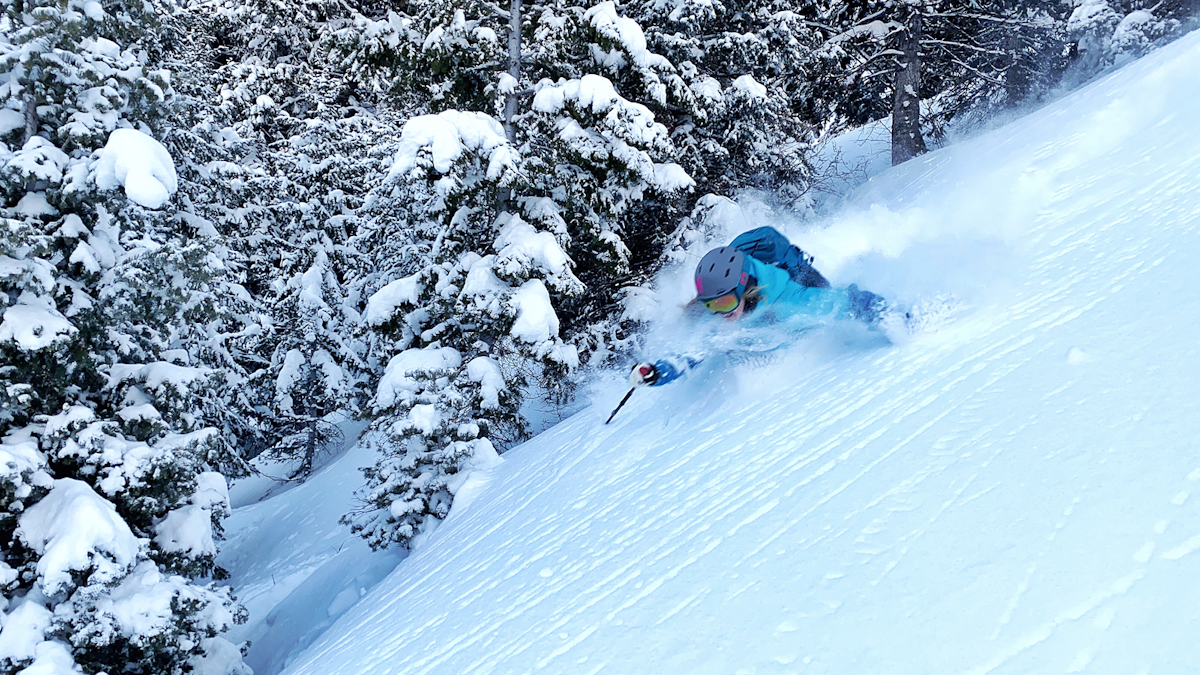
![[GIVEAWAY] Win a 4-Night Karma Campervan Rental and go Ski the Powder Highway](https://www.datocms-assets.com/163516/1767816935-copy-of-dji_0608-1.jpg?w=200&h=200&fit=crop)
![[GIVEAWAY] Win a Legendary Ski Trip with Icelantic's Road to the Rocks](https://www.datocms-assets.com/163516/1751532112-rttr_feat.jpg?w=200&h=200&fit=crop)
